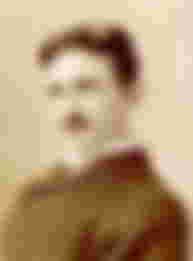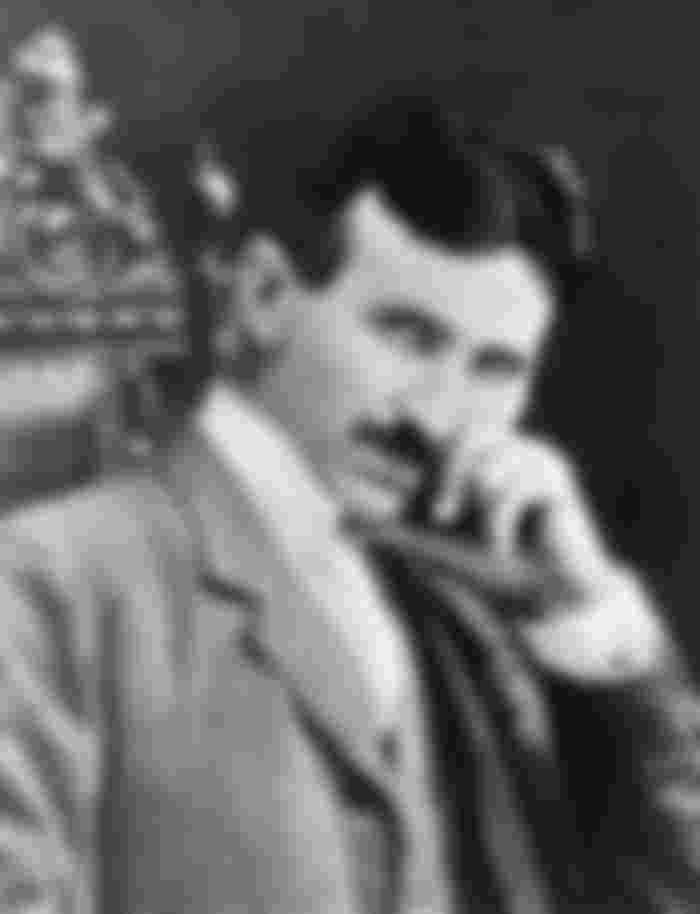The inventor who invented the wheel of the modern age

Nikola Tesla was born in the family of an Orthodox priest on July 10, 1856 in Smiljan, today's Republic of Croatia. His parents Milutin and Georgina, in addition to him, had a son Dane and daughters Angelina and Milka, older than Nikola and Marica, the youngest child in the Tesla family.
He got his name from his paternal grandfather. He started school in his hometown, where he spent the most carefree years of his life. After the accident, during which the Tesla family's eldest son, Dane, died, the family moved to Gospić, where young Nikola continued his education. While studying in Gospić, and later at the High Real High School in Karlovac, he was tired of the fact that after that he would have to continue the family tradition and become a priest. That fact did not give him peace since he was sincerely interested in the natural sciences. After finishing high school in Karlovac, on vacation, returning to Gospić, young Tesla fell ill with cholera. At that time, this vicious disease claimed a large number of lives.
"In one of the dying moments they thought was my last, my father burst into my room. I still remember his pale face as he tried to cheer me up, in an uncertain voice. I told him:
-Maybe I could recover if you let me study technique. "You're going to the best technical school in the world," he replied solemnly, and I knew he meant it.
As, indeed, a miraculous recovery followed, as promised by his father, Nikola Tesla enrolled in the Higher Technical School in Graz in 1875. In these much-desired studies, Tesla expressed more than the necessary interest in mastering the subject. In that way, he wanted to show his father that he was not wrong in allowing him to dedicate himself to studying the secrets of mathematics, physics and mechanical engineering. However, despite the professor's confessions that he received in his testimonies, his father seemed to be uninterested in his son's success.
"It almost killed my ambition; but later when my father died, it shook me when I found a bundle of letters my professors were writing proposing that he drop me out of college, if I didn't want to kill myself by overwork." In Graz, Tesla's ideas for creating a turning field were born. When he presented the idea to one of his professors that it might be possible to start a brushless motor, he received the following answer:
"Mr. Tesla may be doing great things, but he will certainly not be able to do this. It would be as if a constant attractive force such as gravity were transformed into a rotational one. It's a perpetuum mobile, an impossible idea. "
In 1879, Nikola Tesla received his first job, he started working as an assistant engineer in Maribor. In the same year, his father died in order to fulfill his father's wish to finish college in 1880. Tesla enrolled at the university in Prague. The several years that followed represented a significant period in Nikola Tesla's career. After working in Budapest at the Central Telephone Office, the invention of the rotating magnetic field followed (February 1882). That same year, on the recommendation of his superiors, he got a job in Paris at Edison's Continental Society. He spent two years there on various and very responsible jobs, and as his skills could not go unnoticed, he was recommended to Edison himself. At that time, Edison was the most important person in technology in America, the hero of electricity when the whole nation celebrated. He gave Tesla a job in his laboratory in New York in 1884, but their cooperation did not last long. Dissatisfied with the attitude of his superiors towards his work, Nikola Tesla left Edison in 1885 and, with the help of some investors, founded "Tesla Arc Light Co". Initially, due to obligations to investors, he had to work in the field of arc lamps, but after that he started to realize his projects in the field of polyphase alternating currents. After the lecture "New system of motors and transformers of alternating current" on May 16, 1888, which he held in front of the American Institute of Electrical Engineers (AIEE), Tesla received an offer from Westinghouse for the purchase of patents in the field of polyphase currents.

Years followed in which Tesla worked with Westinghouse engineers on the practical application of his inventions. On July 30, 1891, Nikola Tesla received American citizenship.
Tesla spent a good part of 1892 in Europe. There he promoted his ideas through numerous lectures. He gave his lecture "Experiments with alternating currents of high voltages and high frequencies" in England in front of the Institute of Electrical Engineers and in front of the Royal Institute. He repeated the same lecture in Paris in front of the International Society of Electricians and the French Society of Physics. He also arrived to visit Belgrade for the only time in his life, where he stayed for three days. Also in 1882, Tesla was left without another parent. His mother died and that loss fell terribly hard on him.
After returning to America, a new struggle ensued. Proponents of the use of direct current, as well as opponents of the use of alternating current, have insulted trees and stones, criticizing and warning of the dangers that its use brings. The triumph, in this conflict known as the "War of the Currents", was taken in 1893 by those who had a little more visionary with them. The World's Fair in Chicago was lit that year with the help of alternating current.
Research in the field of wireless signal and energy transmission followed. Tesla publicly stated his idea and intention to direct his research in that direction in a speech during the commissioning of the power plant at Niagara Falls in 1897. transmission of the same without wires?
Tesla's research in this field is a great mystery. Although he spent nearly a year in Colorado Springs (1899-1900), and kept an exhaustive diary of his research, the widespread use of wireless transmission of electricity has not occurred to this day. Tesla intended to use the upper layers of the globe to transfer energy from one end of the world to the other. He described some of his discoveries in the essay "The Problem of Increasing Human Energy", which aroused wide interest in the scientific and business world.
Probably intrigued by the essay of J.P. Morgan (John Pierpont Morgan 1837-1913), at that time one of the richest people in America, offered financial support to Tesla. The collaboration took place on the "World Radio System" project, which Tesla led in his laboratory on Long Island. A year later, in 1901, Morgan denied the scientist finances. The reason for the termination of cooperation was the first successful transatlantic wireless sending of a radio message, which was performed by Marconi (Guglielmo Marconi 1874-1937). Tesla then admitted to Morgan that he could have done something like that a long time ago, but that was not the goal of his research. Morgan was furious about this, as he believed, evasion and never cooperated with Tesla again.
Tesla somehow managed on this project until 1905, when he completely exhausted the sources of financing and was forced to leave it. Years followed in which he worked on perfecting existing and patenting new inventions in the field of mechanical engineering. Those years were quite difficult for him. The public was reminded of the great genius in 1917, when he was awarded the Edison Medal, the highest American medal in the field of technology. In 1919, Nikola Tesla published his autobiography through a series of articles in the journal Electrical Experimenter. For people who were not close to him, the news from Tesla came through newspaper articles in which they could read his often too sensational statements.
Statements such as "How to signal to Mars" or "Tornado Dispersal" did not really contribute to his reputation. At that time, they were considered more the fruit of a vivid imagination than possible scientific achievements. Tesla somehow survived with the help of friends and a modest pension, which he reluctantly accepted from the then Yugoslav government. His health deteriorated significantly after the deaths of his friends Robert Underwood Johnson and Richmond Pearson Hobson in 1937. He also had a car accident that year - he was hit by a taxi while crossing the street.
Almost alone, without a family, and only in the company of my nephew Sava Kosanović (son of Marica Kosanović) and a couple of friends, Tesla rarely appeared in public in the later years of his life. The exception was the visit of King Peter II Karadjordjevic, who came to meet Tesla in his apartment in June 1942. On January 5, 1943, Tesla called the US Department of War. In a short conversation, the great scientist offered the secrets of his super weapon to the American army. The officer did not understand who it was and probably thinking that it was a prankster or a lunatic, he promised to call later.
At the age of eighty-seven, on January 7, 1943, the heart of this noble scientist stopped beating at the New Yorker Hotel. In the Cathedral of St. On January 12, two thousand people gathered at St. John the Theologian, including a large number of inventors, Nobel Prize winners, world-renowned names in the field of electrical engineering, and Yugoslav diplomats.
Two days earlier, the then mayor of New York, Fiorello LaGuardia, gave a funeral speech that was broadcast live on New York radio.
… Tesla was a great humanist-pure scientific genius - a poet in science… He did extraordinary, astonishing, miraculous things during his life. He did it simply to serve the human race - and he did not ask for anything for his services. Money - he didn't care about him. Honor - who is someone who can honor another. That was his attitude. Gratitude - he did not expect or ask for it… That significant part of Tesla lives in his achievement, which is huge — almost impossible to calculate — which is an integral part of our lives and an integral part of our civilization, our daily routine of our ongoing effort. ” The remains of one of the greatest people, who lived in the last century, are in the Nikola Tesla Museum in Belgrade in an urn of ideal spherical shape.
Today, in the world, the name of Nikola Tesla is shouted loudly, with a lot of respect, which this man deserves. Numerous associations, student and engineering organizations, keep the memory of the greats of world science. Many books have been written about him, various possible and impossible theories have been told, but there is only one truth. Nikola Tesla was a great scientist, a man without whose inventions it would be difficult for us to live the way we live - with a lot of comfort and freedom provided by electricity. It is our duty, as a token of gratitude, not to allow his name to ever be forgotten.


He gave his great contribution to science and technological progress ... he will be remembered for all times ...